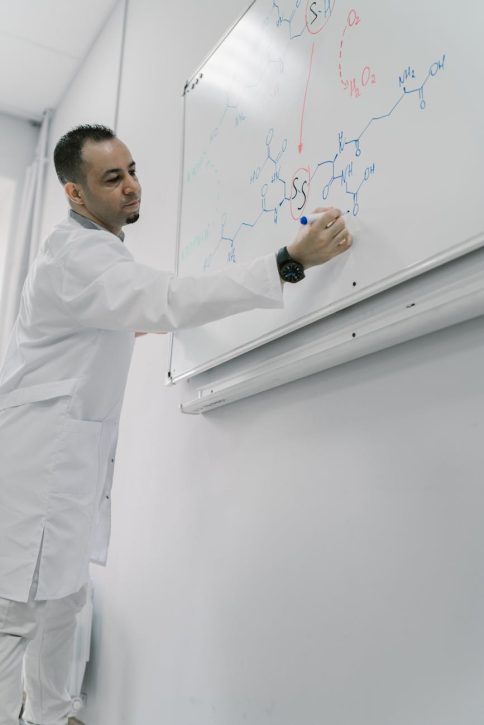Graph Theory in Various Fields
Graph theory has a broad scope of applications across numerous disciplines. You can see its significant impact in both computer networks and social network analysis.
Impact on Computer Networks
In the realm of computer networks, graph theory plays a crucial role in designing network topologies. You can utilize it to develop routing algorithms and optimize data transmission, thereby improving overall network efficiency and reliability. This mathematical framework allows you to represent network elements as vertices and connections between them as edges. By analyzing these graphs, you can identify the best paths for data flow, ensuring faster and more reliable communication. For more examples of how graph theory is applied in various domains, check out our article on applications of graph theory in real life.
| Application | Description |
|---|---|
| Network Topologies | Design of how different elements within a network are interconnected. |
| Routing Algorithms | Methods used to determine the most efficient path for data transmission. |
| Data Transmission Optimization | Improving the efficiency of data flow through a network. |
Role in Social Network Analysis
When it comes to social network analysis, graph theory is indispensable for studying the structure and dynamics of social interactions. By representing individuals as vertices and relationships as edges, you can analyze patterns in friendships, collaborations, and information sharing. This analysis helps in identifying influential nodes or communities, allowing for a deeper understanding of social phenomena. Techniques such as community detection algorithms based on graph theory can aid marketers in targeting specific audiences effectively. If you want to learn more about community detection techniques, take a look at our article on graph convolutional neural networks.
| Social Network Analysis Aspect | Description |
|---|---|
| Vertex Representation | Individuals or entities represented as points in a graph. |
| Edge Representation | Relationships or interactions represented as lines connecting points. |
| Community Detection | Identifying groups within the network that have strong connections among members. |
Graph theory not only serves as a foundational element in computer networks and social analysis but also extends its reach to other domains like transportation and biology. Understanding these applications can enhance your grasp of graph theory’s practical implications in real-world scenarios.
Practical Applications of Graph Theory
Graph theory has a wide range of practical applications that impact various fields. This section will cover two significant areas where graph theory plays a critical role: transportation modeling and biological network analysis.
Transportation Modeling
Graph theory is essential in modeling transportation networks, including road networks, railway systems, and flight routes. By analyzing the connectivity and distances between locations within the network, graph theory enables efficient route planning, traffic optimization, and resource allocation (GeeksforGeeks).
In transportation management, companies are increasingly focused on optimizing routes to reduce costs and minimize emissions. For example, road transportation carries significant costs and is a major source of CO2 emissions for retailers. According to Towards Data Science, companies often conduct route planning optimization studies to improve efficiency and decrease environmental impact.
Using graph theory allows visualization of distribution networks, which enhances collaboration between data scientists and transport teams. Below is a table summarizing the main benefits of applying graph theory in transportation modeling:
| Application Area | Benefits |
|---|---|
| Route Planning | Optimizes travel time and distances |
| Traffic Flow Analysis | Reduces congestion and enhances efficiency |
| Resource Allocation | Allocates trucks efficiently to minimize costs |
| Environmental Impact | Helps reduce CO2 emissions through optimization |
Biological Network Analysis
Graph theory also plays a vital role in biological network analysis, such as understanding molecular interactions in cellular processes and mapping out complex networks in ecosystems. Biological systems, including gene regulatory networks and protein-protein interaction networks, can be represented as graphs, where entities like genes or proteins are nodes, and their interactions are edges.
Using graph theory in biology helps researchers uncover patterns, identify critical components, and predict outcomes in complex biological systems. For example, by analyzing protein interactions with graph algorithms, scientists can identify potential drug targets and better understand disease mechanisms.
Graph theory’s applications extend to ecology as well, where it helps in modeling ecosystem dynamics by representing different species as nodes and their interactions as edges. This can provide insights into biodiversity and ecological resilience.
To explore more applications of graph theory, feel free to check out our section on applications of graph theory in real life, where you’ll discover further insights and real-world examples.
Graph Neural Networks Introduction
Graph Neural Networks (GNNs) are an exciting advancement within graph theory, combining the power of deep learning with the structure of graphs. If you’re diving into the world of GNNs, understanding their foundation is vital.
Understanding Graph Neural Networks
Graph Neural Networks are designed to process data that is structured as graphs. These graphs consist of nodes (or vertices) that are connected by edges (or links). Unlike traditional neural networks, GNNs take advantage of the relationships between these nodes to make predictions or extract patterns.
GNNs work by aggregating information from a node’s neighbors, allowing the network to learn meaningful representations based on the graph’s structure. This process is particularly useful for tasks like node classification, link prediction, and graph classification. If you’re keen on exploring this topic further, consider looking into graph convolutional neural networks for more in-depth insights.
Benefits of GNNs
Using Graph Neural Networks offers numerous advantages:
- Advanced Pattern Recognition: GNNs can effectively identify patterns and relationships in complex data structures.
- Versatility: They are applied in a variety of fields including computer science, social network analysis, and biology, as discussed in more detail in applications of graph theory in real life.
- Efficiency: GNNs optimize processes by enabling faster computations through shared information across graph nodes.
- Deep Learning Integration: They combine the benefits of deep learning with graph theory, allowing for improved decision-making based on interconnected data.
Here’s a quick comparison of several key benefits:
| Benefit | Description |
|---|---|
| Advanced Pattern Recognition | Better at finding relationships within data. |
| Versatility | Can be applied across various domains. |
| Efficiency | Shared information leads to faster computations. |
| Deep Learning Integration | Leverages the strengths of deep learning techniques. |
For hands-on learning, check out our guide on graph neural networks tutorial. This will help you grasp the practical applications of GNNs and how they can be implemented effectively, including algorithms like those found in graph neural networks algorithms.
GNNs represent a significant leap in making use of the structured data that graph theory provides, and understanding them can open up a world of possibilities in both practical applications and future research.
Implementing Biconnectivity Algorithm
Graph theory practical applications frequently involve the use of various algorithms, one of which is the Biconnectivity Algorithm. This algorithm helps identify biconnected components in a graph, ensuring that you understand the stability of networks. Below, you will find an overview of how the algorithm works, along with code examples to guide you through the implementation process.
Algorithm Overview
The Biconnectivity Algorithm identifies the biconnected components of a graph, which are subgraphs where any two vertices are connected to each other by at least two distinct paths. This characteristic enhances the robustness of a network against failures.
To implement this algorithm, you can use Depth First Search (DFS) to explore the graph. The essential steps include:
- Initialization: Set counters for discovery time and low values for each vertex.
- DFS Traversal: For each vertex, determine its discovery time and the lowest point reachable through its adjacent vertices.
- Identify Biconnected Components: Whenever the algorithm finds an articulation point (a vertex showing a connection reduction), it identifies the subgraph as a biconnected component.
Code Examples and Implementation
Here’s a simplified Python code snippet illustrating the Biconnectivity Algorithm using DFS:
class Graph:
def __init__(self, vertices):
self.V = vertices
self.adj = [[] for _ in range(vertices)]
self.time = 0
def add_edge(self, u, v):
self.adj[u].append(v)
self.adj[v].append(u)
def biconnected_util(self, u, low, disc, parent, bcc):
children = 0
disc[u] = low[u] = self.time
self.time += 1
for v in self.adj[u]:
if disc[v] == -1: # v is not visited
parent[v] = u
children += 1
self.biconnected_util(v, low, disc, parent, bcc)
low[u] = min(low[u], low[v])
if (parent[u] == -1 and children > 1) or (parent[u] != -1 and low[v] >= disc[u]):
bcc.append((u, v))
elif v != parent[u]: # Back edge
low[u] = min(low[u], disc[v])
def biconnected_components(self):
disc = [-1] * self.V
low = [-1] * self.V
parent = [-1] * self.V
bcc = []
for i in range(self.V):
if disc[i] == -1:
self.biconnected_util(i, low, disc, parent, bcc)
return bcc
# Example Usage
g = Graph(5)
g.add_edge(0, 1)
g.add_edge(1, 2)
g.add_edge(2, 0)
g.add_edge(1, 3)
g.add_edge(3, 4)
print("Biconnected components:", g.biconnected_components())
This code initializes the graph, adds edges, and identifies the biconnected components by invoking the biconnected_components method. You can adjust the graph by adding or removing edges as needed.
Feel free to expand your journey with more detailed explorations of graph theory algorithms explained for greater understanding. By putting this Biconnectivity Algorithm into practice, you can further appreciate the power of graph theory in various fields, from transportation modeling to biological network analysis. Check out our article on applications of graph theory in real life for more fascinating insights.




